
First aid is the immediate care or treatment given to a person following an accident, illness, or injury. The sooner help is provided, the greater the chance of recovery without lasting effects.
In this article we discuss 10 of the most common and practical everyday lifesaving first aid procedures that everyone should know in case they were to ever find themselves in a situation where it’s needed. These procedures include CPR, the recovery position, and the response to anaphylaxis, all of which can enable the responder to save a casualty’s life.
1. CPR (Cardiopulmonary Resuscitation)

CPR or Cardiopulmonary Resuscitation is a life-saving procedure, that maintains blood flow around the body when someone is suffering from a cardiac arrest. By performing CPR, a first aider is manually oxygenating the casualty’s blood which preserves brain function.
This first aid procedure can drastically increase the survival rates for out of hospital cardiac arrests, particularly when performed in conjunction with defibrillator use.
2. The recovery position

The recovery position is primarily used when a casualty is unresponsive and breathing. It is designed to ensure that:
- The casualty will not fall out of the position if left unattended.
- The casualty is on their side
- The airway is maintained, with any potential hazards such as vomit or secretions draining away.
- There is no pressure on the chest.
- The casualty can quickly be repositioned if CPR becomes necessary.
3. Choking response (Heimlich Manoeuvre and back blows)
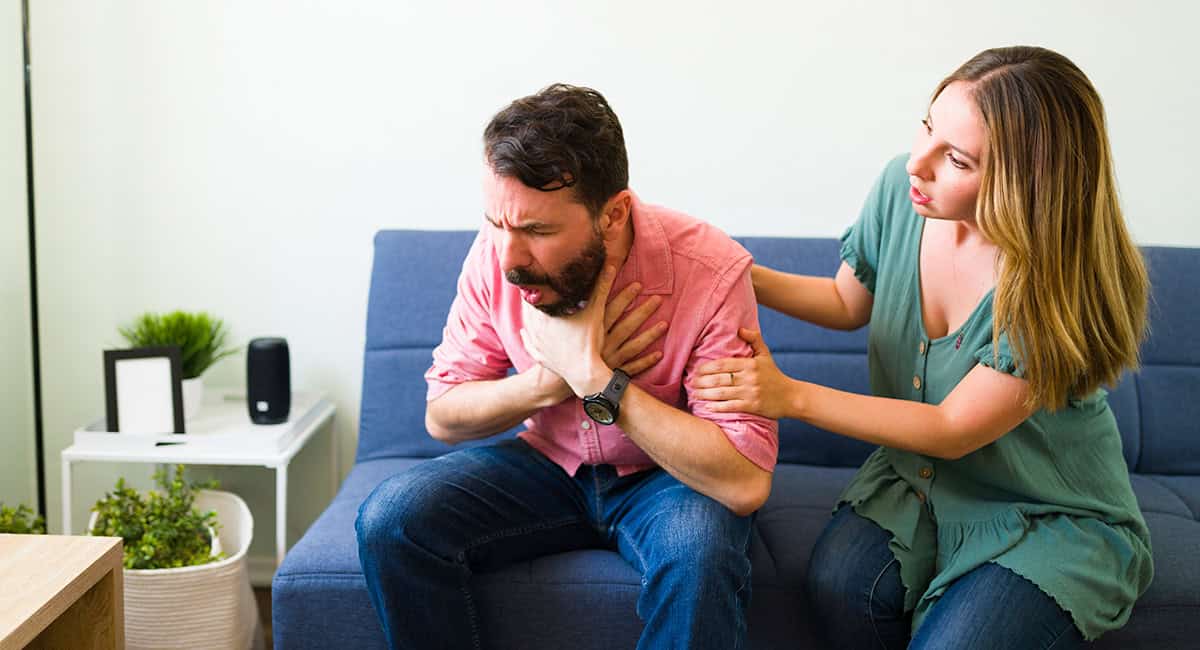
Choking occurs when an object becomes lodged in the airway, blocking airflow to the lungs. A first aider can attempt to remove this blockage by performing the Heimlich manoeuvre and back blows on a conscious casualty.
- Lean the casualty forward
- Perform up to 5 back blows between their shoulder blades with the base of your palm in an upward direction.
- If the back blows do not dislodge the blockage, perform up to 5 abdominal thrusts (Heimlich manoeuvres). Stand behind the casualty, place your interlocked fists below where the ribs meet and pull inwards and upwards.
- Continue with this (5 back blows, 5 abdominal thrusts) until either the airway is cleared, or emergency help arrives.
- Call 999 if the person is still choking after 1 cycle of back blows and abdominal thrusts.
4. Controlling severe bleeding
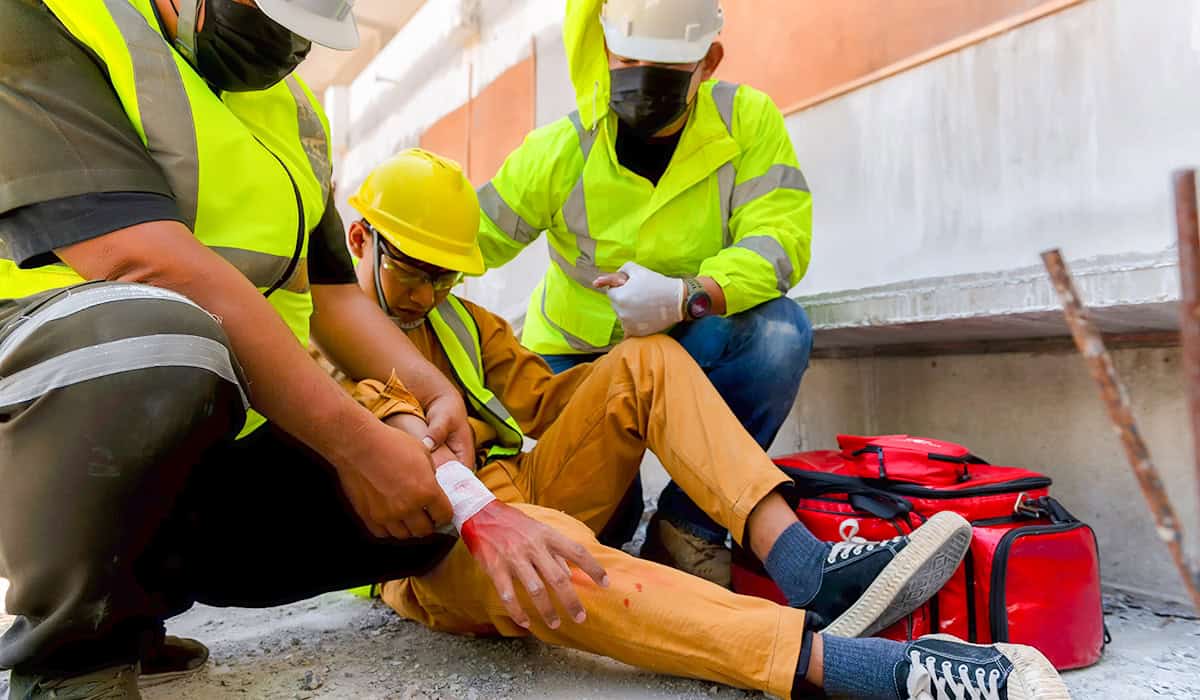
Life-threatening bleeding can occur anywhere at any time. It is incredibly common in workplaces with heavy machinery and with the introduction of Martyn’s Law more people are considering the ways in which help can be given during and after mass casualty events.
To treat severe bleeding, you should:
- Sit the casualty down.
- Remove or cut off any clothing that is preventing access to the wound.
- Apply pressure to limit the blood loss.
- Apply an appropriately sized first aid dressing, packing around any protruding objects.
- If blood seeps through the first dressing, remove, reapply pressure and then secure a new bandage once the bleeding is controlled.
- Observe for signs of hypovolaemic shock.
- Apply a tourniquet for severe bleeding on a limb – monitor and record when this was applied.
5. Treating burns and scalds
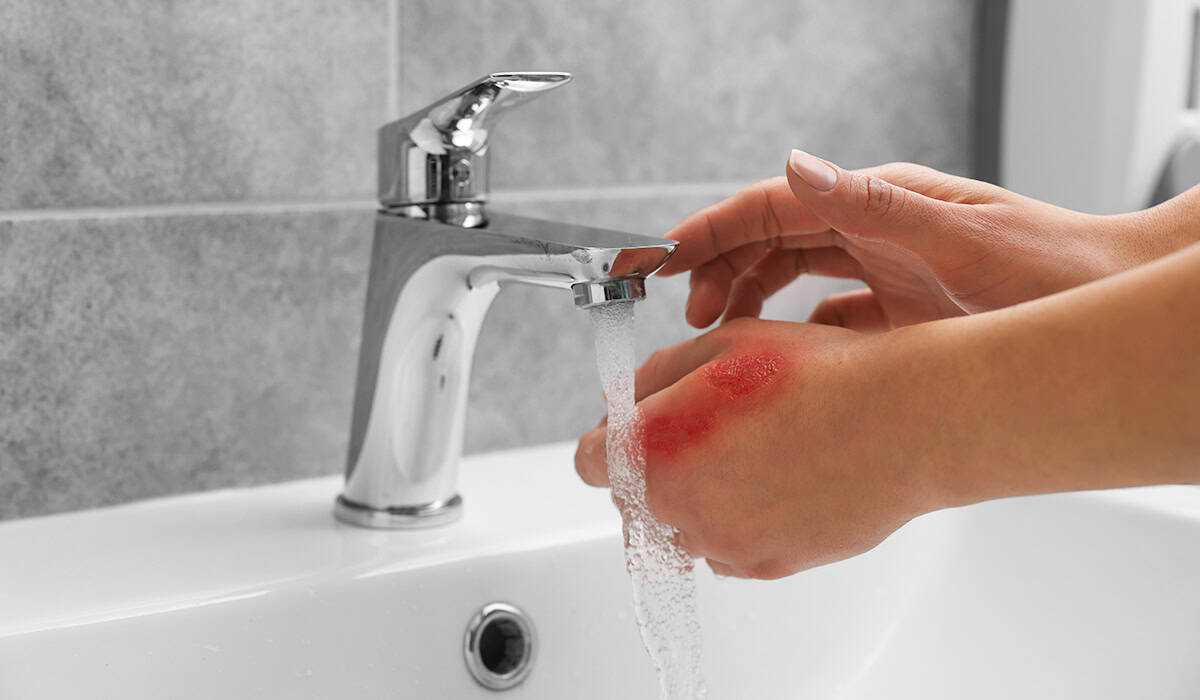
Burns and scalds are very common injuries that can occur both at home and at work, which is why it is so important to know some basic treatment for handling them.
When treating a burn:
- Cool it with water for at least 20 minutes, if there is no running/clean water burn gels can be used.
- Remove any items of jewellery or clothing that may constrict the area if it were to swell, for example wedding rings.
- Cover the burn with cling film or a burn dressing, do not use anything that could potentially leave fibres or other contaminants behind.
- Seek medical advice if needed.
Do not:
- Use ice, creams or butter on the burn.
- Use cotton wool or fluffy bandages to dress or clean the area.
- Burst blisters.
- Remove clothing that has stuck to the skin already.
6. Managing fractures and sprains

Guide on how to immobilise a fracture with improvised supports until professional help arrives.
If you are dealing with a suspected fracture, you should:
- Support the area and keep it as still as possible, you can do this using a splint or improvising with bandages if one is unavailable.
- Control any external bleeding, but do not try to apply pressure to any protruding bones.
- Lightly cover any open wounds with a sterile dressing, packing around any bones that are protruding from the skin.
- Call emergency services or seek medical attention.
- Check for circulation below the injury regularly.
When treating a sprain
When treating a sprain, it is best to follow the PRICE method:Protect – protect the injury from further harm by stopping what caused the injury and wrapping it in a bandage.
Rest – not using the injured joint and allowing it to recover without too much weight or strain being put upon it.
Ice – use an ice pack to reduce the swelling and pain for intervals of 20 minutes every 2-3 hours.
Compression – apply a firm bandage around the area to reduce the swelling, but do not restrict blood flow.
Elevation – keeping the injury elevated also aids in reducing the swelling.
Sprains tend to feel better within two weeks, however, it can take longer before they are fully recovered.
7. Handling seizures
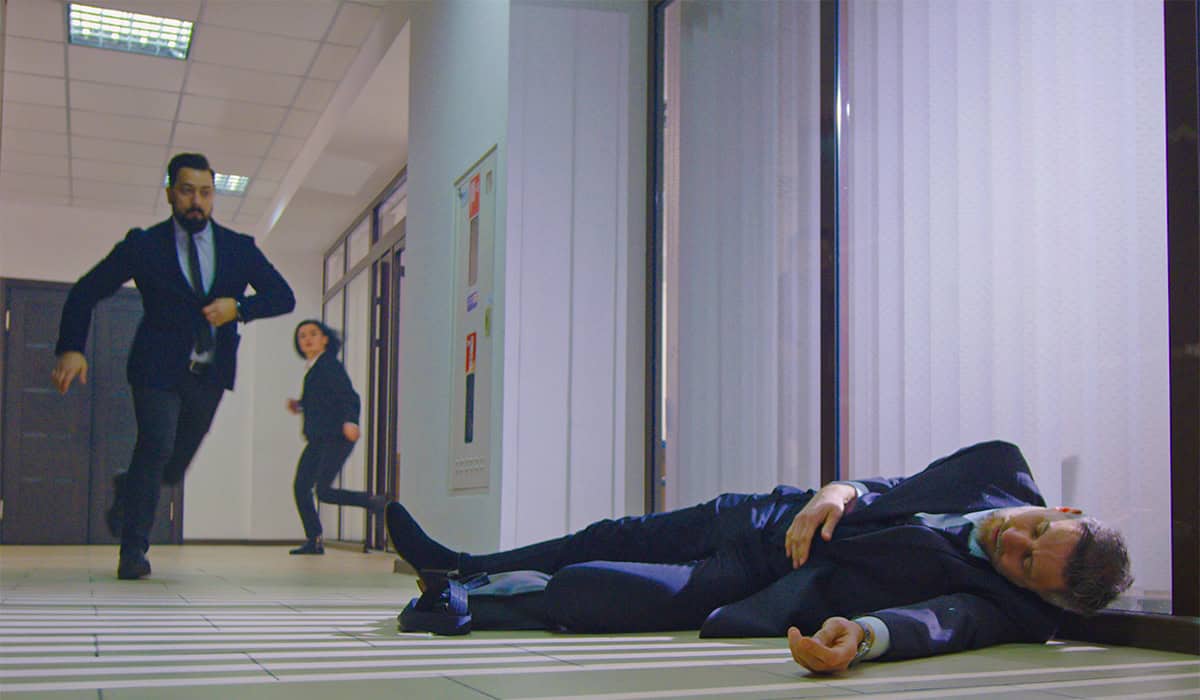
Seizures occur when the normal electrical activity in the brain is interrupted, which can occur due to a variety of reasons.
| Dos | Don’ts |
| Stay calm |
Hold them down |
| Reassure the casualty |
Put anything in their mouth |
| Time the seizure |
Crowd them |
| Ensure they can’t harm themselves |
Allow others to crowd them |
| Put something soft under their head |
|
| Look for medic alert jewellery or ID |
|
| Loosen any clothing that may restrict breathing |
|
| Try to get them to sit on the floor or try to help control the fall |
8. Dealing with shock

Hypovolaemic Shock is a life-threatening condition most commonly caused by extreme blood loss. It can be identified by:
- External bleeding or a history of internal bleeding
- Pale, cold, clammy skin
- Rapid weak pulse
- Rapid shallow breathing, anxiety, confusion and agitation
- Restlessness
- Collapse
- Unresponsiveness
- Thirst
To help someone suffering from shock you should:
- Lie the casualty down and raise their legs (unless there is a back injury)
- Loosen clothing around the neck
- Call 999
- Monitor and record breathing, pulse and responsiveness
- Place in the recovery position if they become unresponsive
- Stay with the casualty and reassure them
9. Treating cuts with minor wounds

When treating minor wounds, you should:
- Stop the bleeding by applying pressure.
- Clean the wound, removing any debris and ensuring there is nothing in the cut that will lead to infection.
- Apply a sterile dressing or plaster.
- Check for any potential underlying injuries.
10. Responding to allergic reactions and anaphylaxis
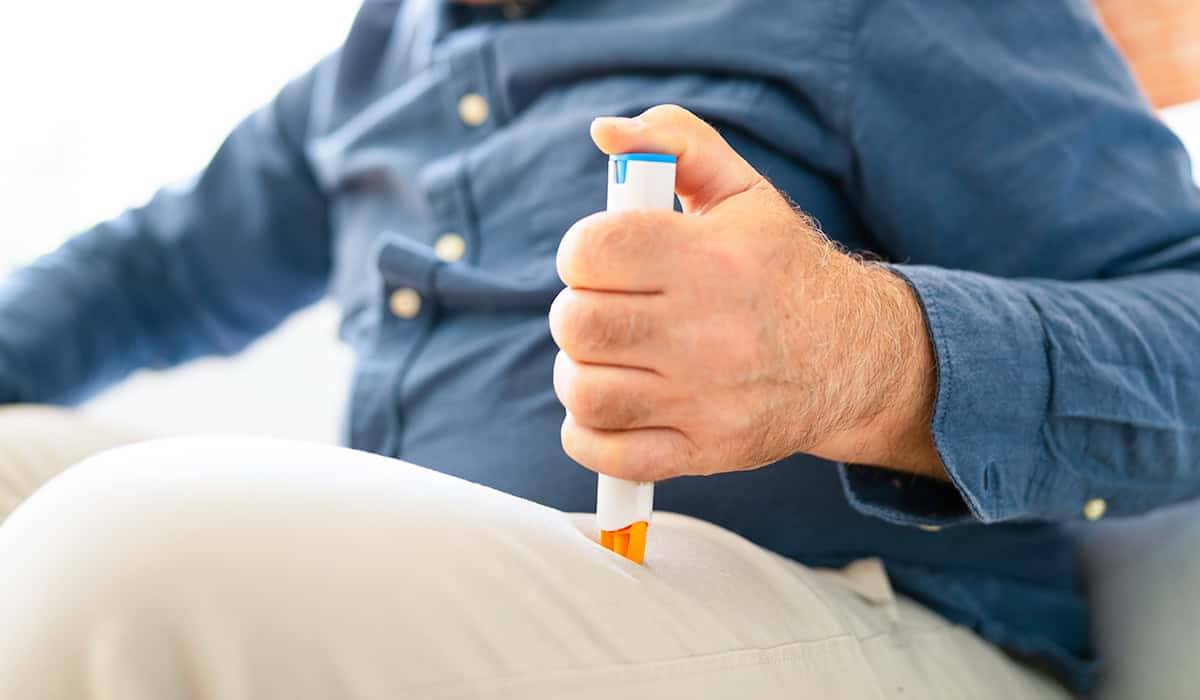
In an allergic reaction the first step a first aider should take is to call emergency services, they will be required regardless of whether an epi-pen is administered or not.
If the casualty has a known cause of anaphylaxis they will have an epi-pen available to them, you should use this as soon as possible. Help them into a position sitting on the floor to relieve any difficulty breathing. If at any time the casualty becomes pale with a weak pulse, help them to lie down with their legs raised and start treating them for shock.
Ensure that you continue to monitor the casualty as you wait for help and if their condition has not improved 5 minutes after using the epi-pen and they have a second one available use it.
The importance of first aid knowledge
Every second counts in an emergency. For example, when someone experiences a cardiac arrest, their chances of survival decrease by 10% for every minute without CPR and defibrillation. That’s why knowing how to perform basic first aid, such as CPR, can literally mean the difference between life and death.First aid skills are not just useful in the workplace or at school; they are vital anywhere, at home, in public, or while travelling. Emergencies can happen without warning, so having the confidence and knowledge to act quickly can save lives and reduce the severity of injuries.
While workplaces and schools are legally required to have trained first aiders onsite, the same cannot be said for many everyday environments. This makes personal knowledge of first aid even more crucial.
The core principles of first aid are simple yet powerful:
- Preserve life
- Prevent the condition from worsening
- Promote recovery
What is the first step in assessing an emergency situation?
Contrary to popular belief, the first step in providing first aid for the majority of procedures doesn’t involve the casualty themselves. A first aider must always assess the situation and their surroundings before going to help someone else; they should ensure that there are no further risks or hazards that could cause harm/further harm to themselves or the person they are trying to help.Once this is done, you can approach the person and assess their level of consciousness. If there are multiple casualties, there will also need to be an assessment to decide who is the most at risk and requires treatment first.
 When is it a medical emergency?
When is it a medical emergency?
A medical emergency is a serious injury or illness that poses an immediate risk to someone’s life or health. According to the NHS, this can include symptoms/events such as difficulty breathing, severe burns, severe allergic reactions, choking and unconsciousness.Medical emergencies will require immediate medical treatment.
Where to learn more
If you are interested in learning more about the various ways to provide first aid it is best to enrol on an accredited first aid course. This will not only ensure that you are qualified if your workplace is in need of first aiders but will provide you with both the theoretical knowledge and practical experience to provide aid to those in need.Most first aid certifications are valid for three years before they expire to ensure that those practicing first aid have the most up-to-date information and procedures in their repertoire.
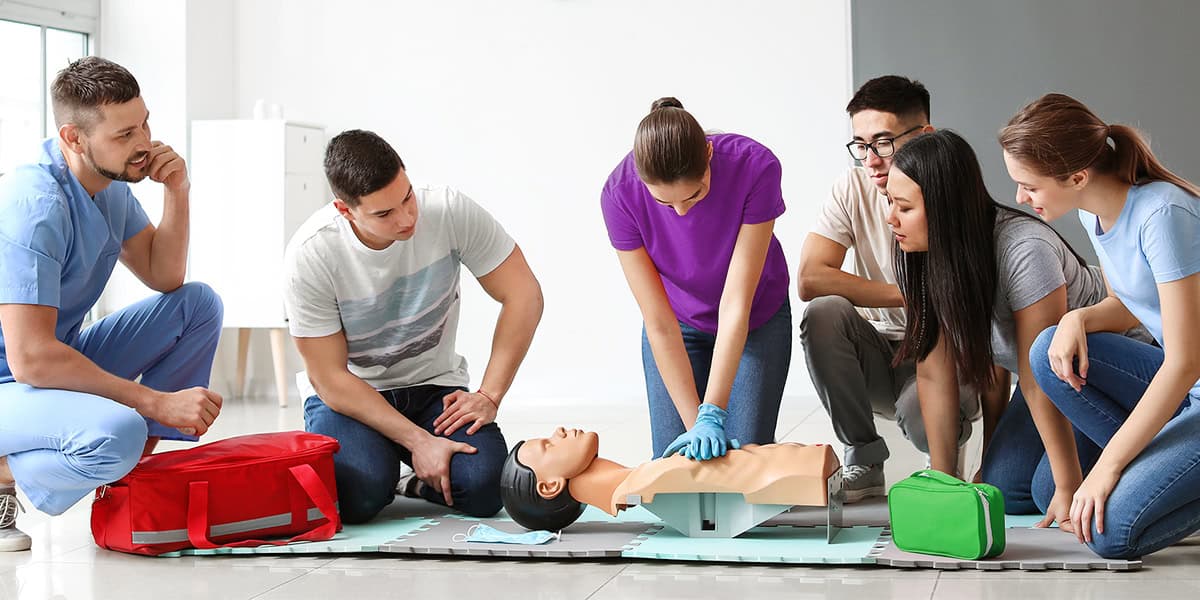 Conclusion
Conclusion
Providing first aid can be the difference between life and death, especially in critical situations like cardiac arrest or anaphylactic shock. Having the knowledge and confidence to act quickly not only increases a person's chances of survival but can also prevent their condition from worsening. However, it’s essential to first assess the scene to ensure it’s safe for both you and the casualty. Staying calm, thinking clearly, and taking the right steps can make a difference and offer much-needed reassurance to someone in distress.By Sarah Mason
Explore more:

